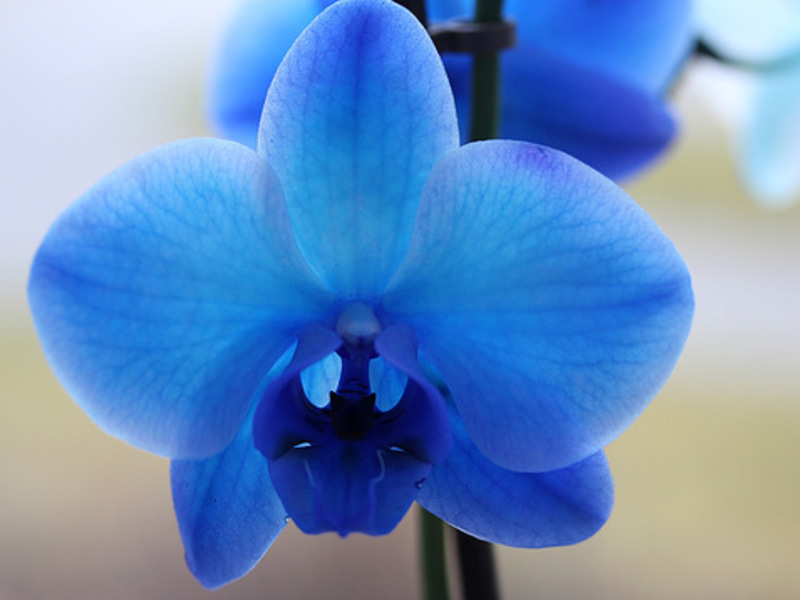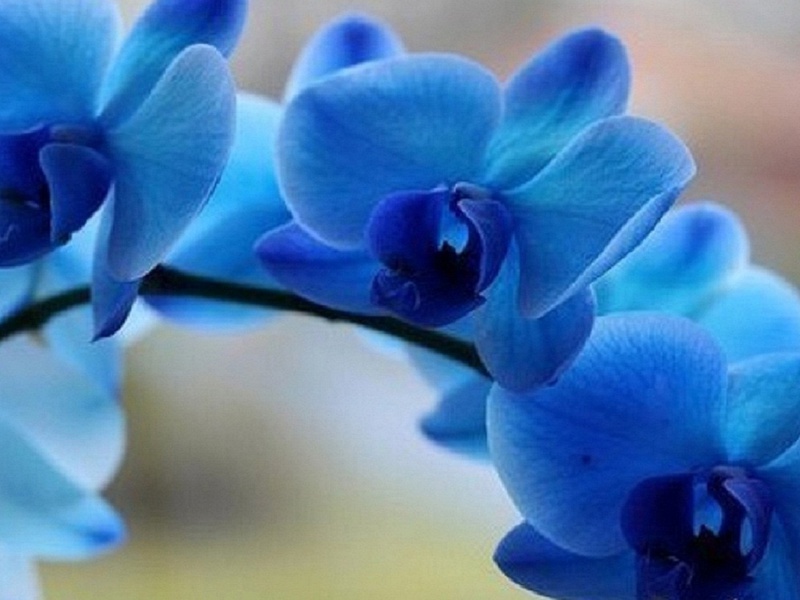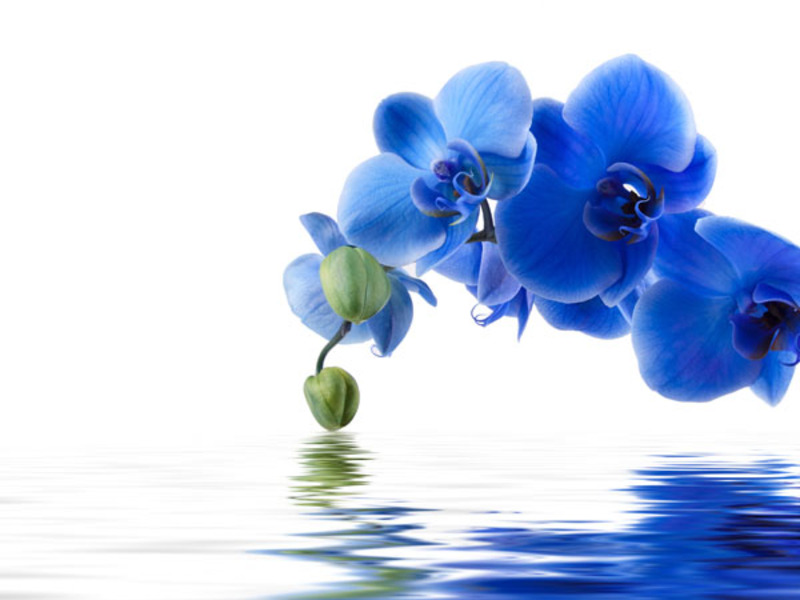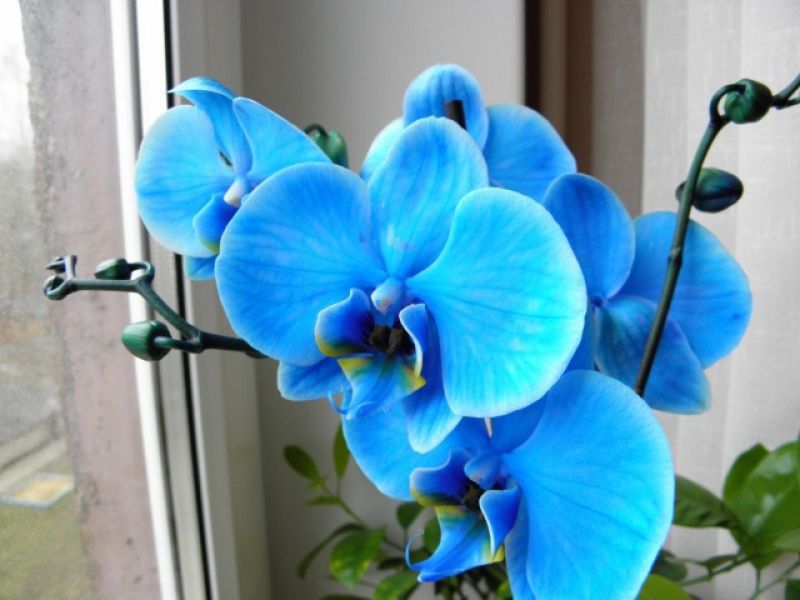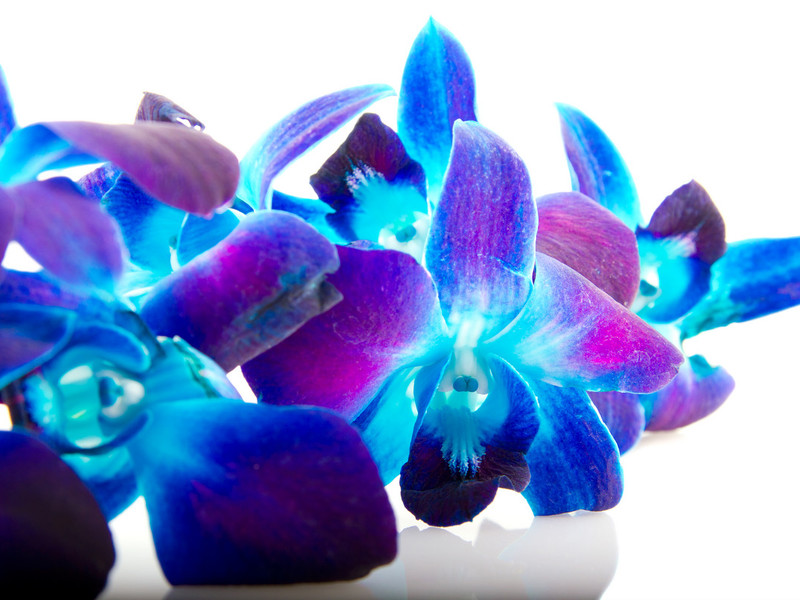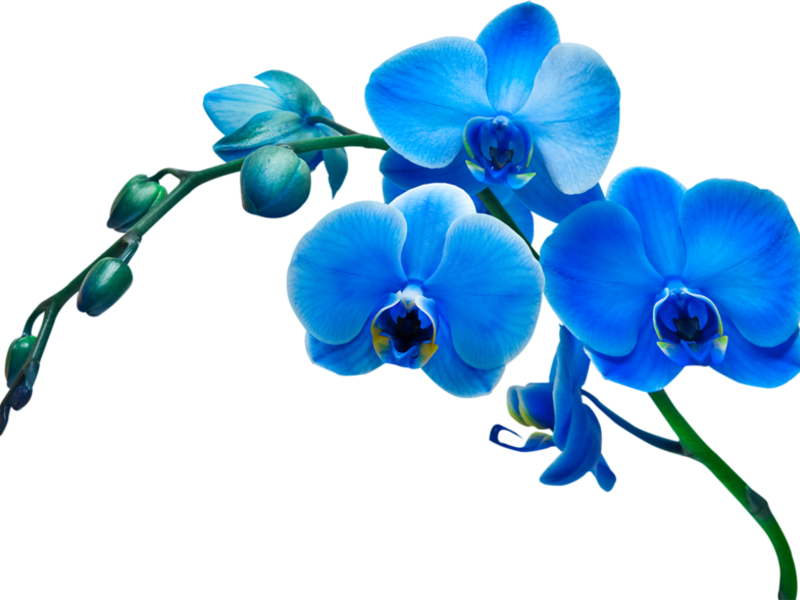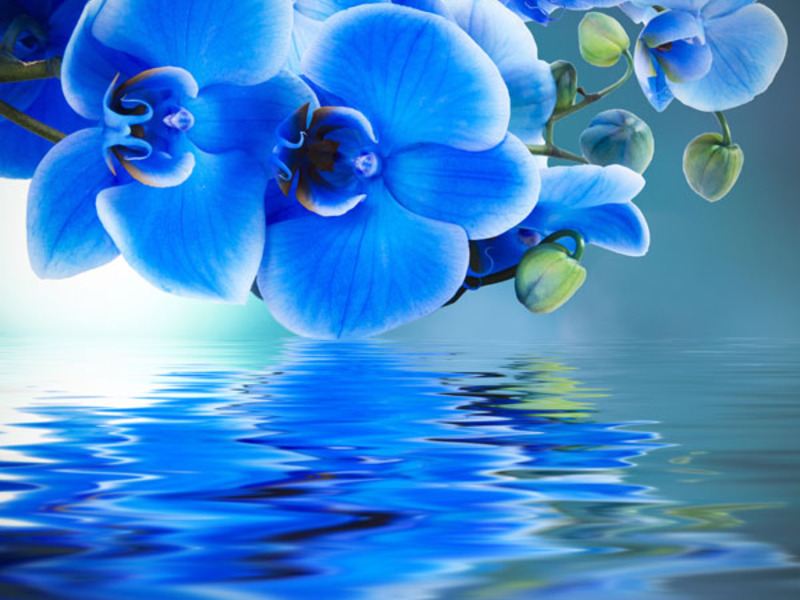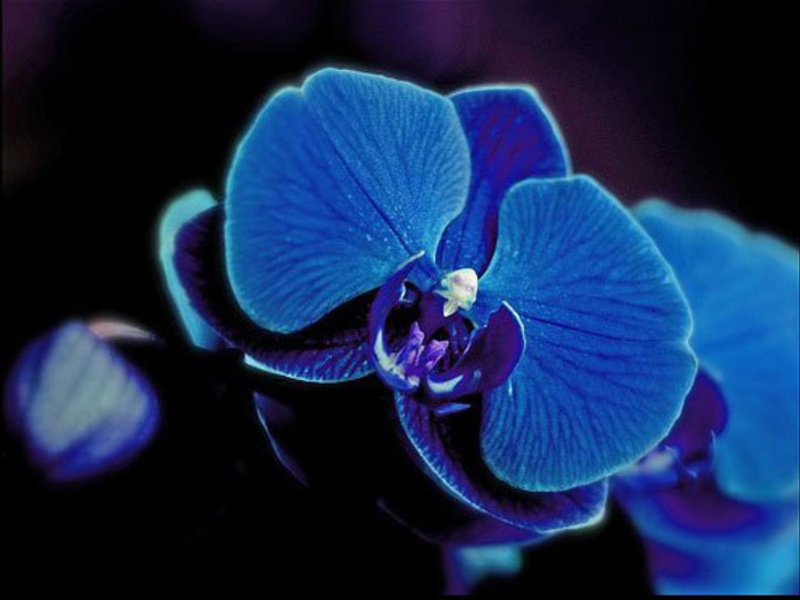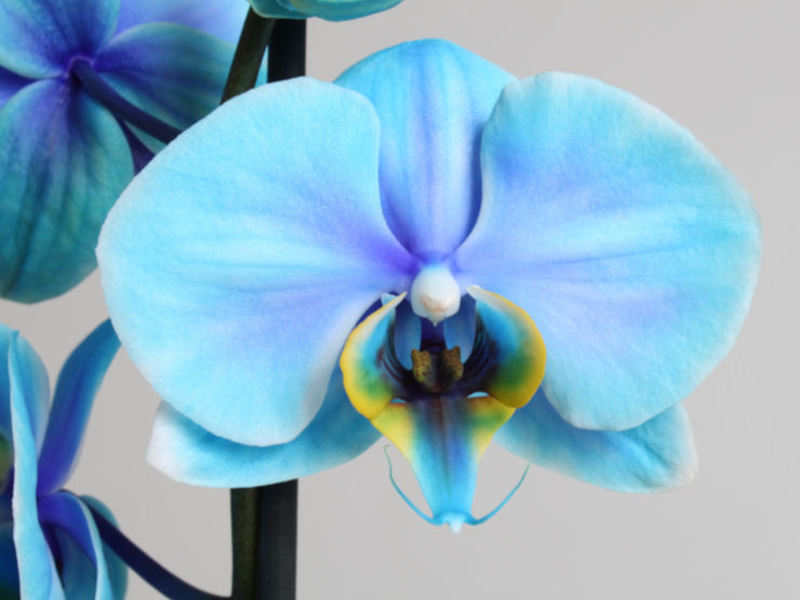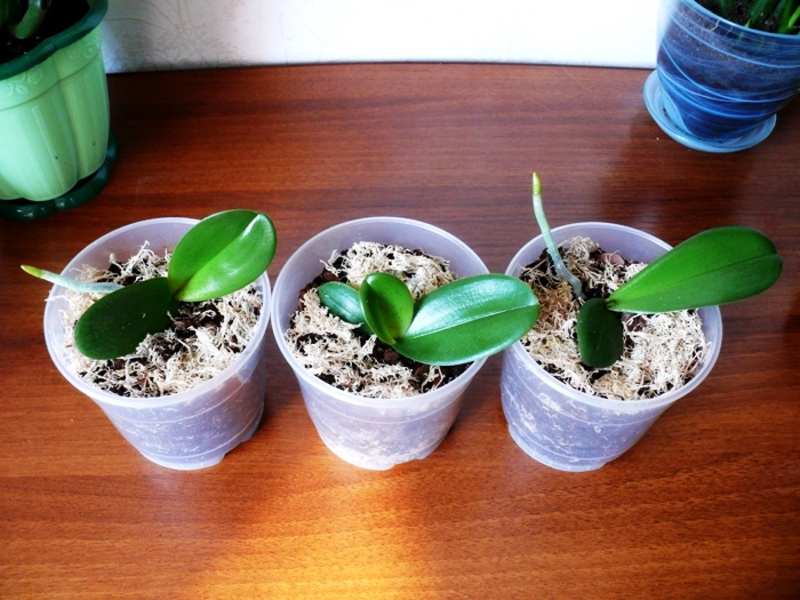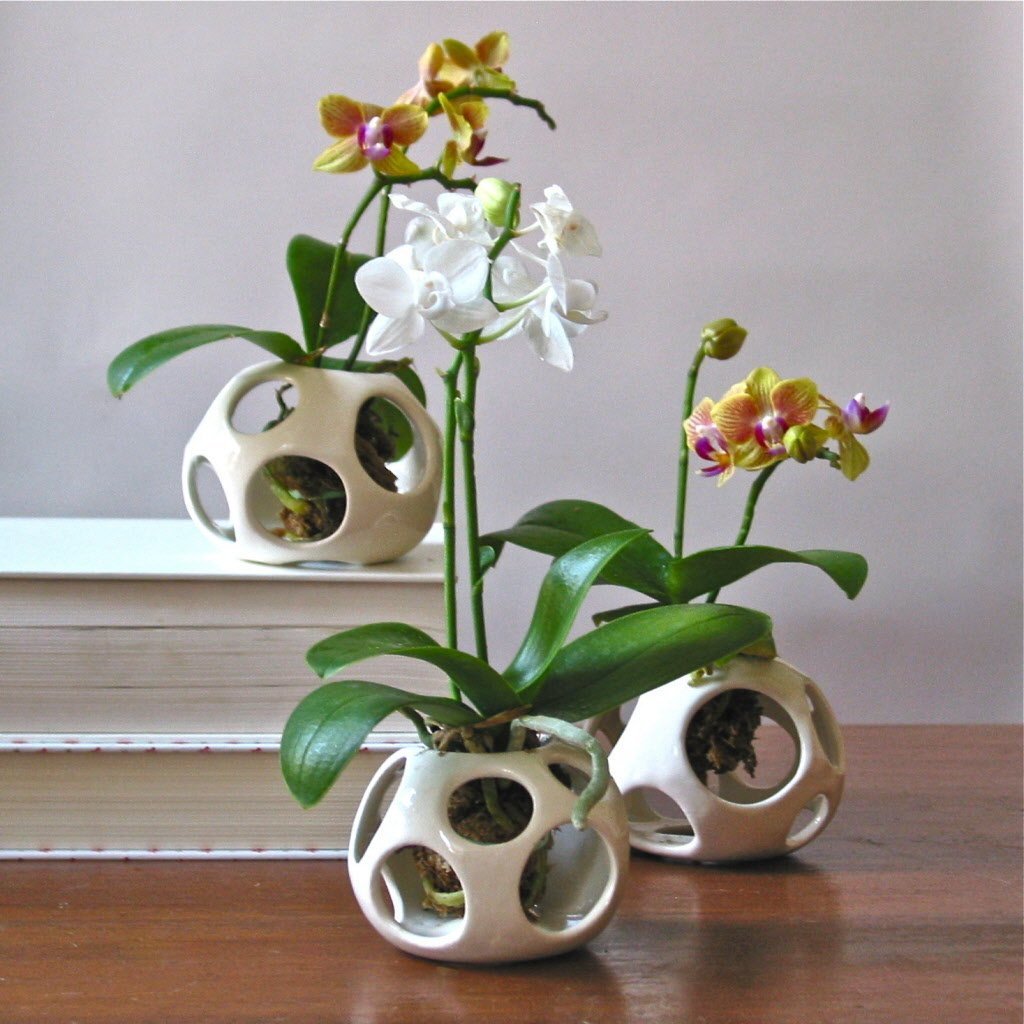Blue orchids are striking in their beauty and rare, unusual color of petals. These flowers have appeared in flower shops relatively recently, but have already gained popularity. However, not all buyers know what the secret of the amazing color of these plants is.
What's behind the paint?
Often, happy owners of orchids with blue or blue flowers are surprised to find that in the next flowering the buds are no longer a bright, saturated color, but dirty blue, or even completely white. This is due to the fact that plants are dyed with a chemical dye... Many stores do not hide this and place appropriate warnings on color labels. But this information is not actively disseminated among buyers, so often the owners of colored flowers are subsequently disappointed.
Flowers are most often painted white, since it is easiest to achieve uniform coloring on them. Over time, the dye is washed out and they return to their original color.
How did blue orchids come about?
 In 2011, the world's first blue phalaenopsis was presented at the tropical plants exhibition in Florida (America). Made it by a growing farm"Silver Vase" from South Florida.
In 2011, the world's first blue phalaenopsis was presented at the tropical plants exhibition in Florida (America). Made it by a growing farm"Silver Vase" from South Florida.
Only 3 months have passed, and it became known about the appearance of another blue beauty - Phalaenopsis Royal Blue (Royal Blue Phalaenopsis). This time the action took place in Holland at the annual FloraHolland flower competition. An exotic flower with blue petals was presented by the Dutch nursery "Geest Orchideeën", for which he received an award in the category "Sales Concept". One of the members of the competition jury predicted the huge popularity of plants among buyers in the future.
Interesting fact: growers do not hide the fact that blue is not natural, and also that the next bloom will be white. They produce coloring by patented technology, the details of which were not disclosed. According to the manufacturers, its essence is as follows: the plants are placed in a special environment, for the creation of which elements of natural origin are used, so the procedure itself does not harm the orchids.
We can conclude that blue is not a natural species or a hybrid bred by breeders. This is just a marketing ploy, and I must say, very successful.
Flower in the house: care features
The problem lies in the fact that some unscrupulous sellers, wanting to earn extra money, take on coloring on their own. They pass off the result of their work as Phalaenopsis Royal Blue and sell for three times more than ordinary white flowers.
Naturally, we are not talking about any technology here. Coloring is sometimes easy barbaric methods... The dye, often ink, is injected into the stem, stem, or root. This procedure greatly weakens the plant, being a source of stress for it. Poisoned by harmful substances, the flower may simply die.
Having bought or received a blue plant as a gift, carefully examine it. If the injection mark is visible on the peduncle, then the plant has a better chance of survival.If the injection was made into the root, then the probability of death is high.
Sometimes phalaenopsis is painted by watering with colored water, in this case, you can observe a blue tint not only on flowers, but also on leaves and roots. Whether a plant survives or not depends on the degree of harm done to it.
The orchid has released buds not blue, but white? No need to try to paint it yourself, water it with blue or ink. From this plant can get sick and die... Better to enjoy her natural, no less beautiful outfit.
Do not rush to transplant a dyed plant immediately after purchase - it may not withstand another stress. Otherwise, the care requirements are the same as for ordinary orchids, but you need to carefully monitor its condition.
If, after the purchase, the flower began to lose buds, it means that it did not cope with the negative influence of the coloring matter. In this case, you need take urgent action to save him... To do this, you should:
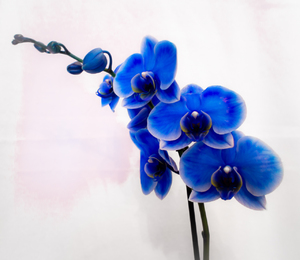 cut off the peduncle, which contains harmful dyes;
cut off the peduncle, which contains harmful dyes;- rinse the roots with warm water, carefully examine them and cut off the rotten and blue areas;
- sprinkle the sections with ash and dry well;
- clean the pot of old soil and fill with a new one, specially designed for orchids;
- plant a flower in a new soil.
Strongly not recommended use old substrate, in which there was a "sick" plant.
Japanese miracle
In 2013, Japanese breeders presented the result of their long-term work - a transgenic blue orchid. As a basis, scientists took the white phalaenopsis Aphrodite, which itself is very fertile and can release up to 30 flowers in one flowering. The plant was implanted with the gene responsible for the blue color from the Commeline flower.
However, due to its exclusivity, the plant remains inaccessible to a wide range of amateur gardeners.
Are blue orchids in nature?
Lovers of exotic flowers will be disappointed: blue does not exist in nature. This species simply there is no gene responsible for this pigment.
If you liked the blue flowers in the photos, of which there are so many on the Internet, do not rush to get upset. You can choose not dyed phalaenopsis, but Wanda - another type of the family. This flower is amazing in its beauty, a real queen. But she requires a proper attitude towards herself and is quite capricious in terms of leaving. A novice gardener may have difficulties with it. If Wanda takes root in your home, she will delight you with luxurious flowers. Their color will not be inferior in beauty to the deep indigo that phalaenopsis is painted with.
Another example of a blue orchid is the Cattleya. Compared to Wanda, she is less demanding in maintenance. This species flowers are large, fragrant, and their color is varied.
This is the most unpretentious species among blue flowers. However, in nature, you will not find that rich blue color that is found in colored buds. These will be subtle shades of blue or pink-blue, blue with a lilac tint. But even this color is rare. Their flowers are medium-sized, but natural in color.
A few tips
Finally several recommendations fans of exotic plants:
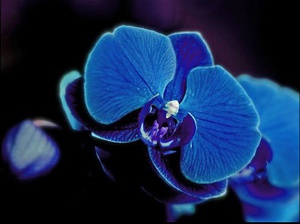 It is better to buy a blue or blue orchid at specialized exhibitions than in stores.
It is better to buy a blue or blue orchid at specialized exhibitions than in stores.- If you buy phalaenopsis in a store, avoid flowers with blue leaves and roots - most likely, such a plant will soon die.
- Painted plants need more careful care, since they can hurt for some time after staining.
- You cannot resort to staining at home.
- You can replace the artificial color with other types of orchids with natural shades.
Whether to buy flowers with blue or blue petals? Everyone decides for himself ...
